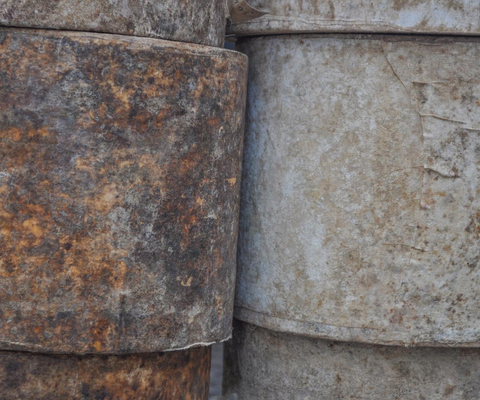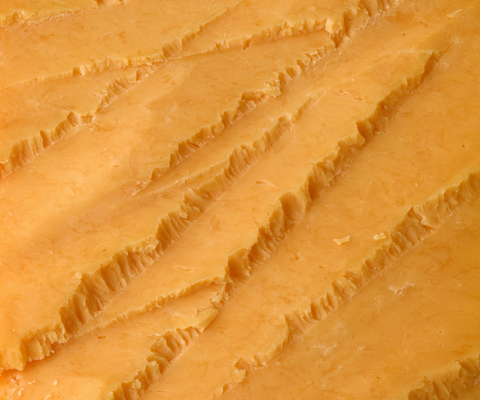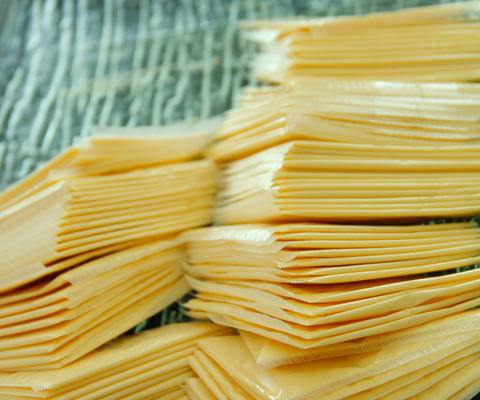Our History of Cheese series has examined cheese in the ancient world, Europe’s rise as a global cheese powerhouse, cheese packaging through the ages, and the spread of cheese and dairy to the New World.
Today, we’re looking at how cheese went from a decentralized, highly regional and small-scale farmhouse product in the U.S. and Europe to a mass-produced, homogeneous commodity during the Industrial Revolution of the 19th century and the 20th century. Here’s how cheese got big.

The Ties Between Textiles and Cheese
When the English colonized North America, they had to adapt their cheesemaking practices to a new, often warmer and drier climate. Techniques such as dressing wheels with whey butter or lard and wrapping them in cotton bandages to protect the cheese and hold in moisture were used by both American and English cheesemakers in the mid-19th century. But it’s suspected that combining these techniques—soaking the cloth in animal fat before bandaging—was an American innovation that traveled back across the Atlantic with American cheese exports and was later adopted by the English.
The practice became much more widespread after the cotton gin drastically reduced the price of Southern plantation-grown cotton cloth in the late 18th century, which then spurred the Industrial Revolution around textiles in the North—another link between the northern dairy industry and enslavement that would persist through the mid-19th century.
In addition to supporting this technological innovation, the fact that textiles were now affordable took the arduous task of spinning cloth for the family’s garments off of the farm wife’s loaded schedule. As the Industrial Revolution gained steam, more and better specialized cheesemaking equipment also became available.
These developments meant that she could devote more time to refining and scaling up cheesemaking on her farm and selling into the North’s booming cities, and her husband could add more cows to the herd. However, as cheesemaking moved from the farmhouse to the factory during the 19th century, women were pushed out of their positions as craftspeople and stewards of cheesemaking and dairy knowledge as men, who had better access to education and capital, gradually standardized and took over the industry.
The Cheese Factory
During the first half of the 18th century, cheese was also spreading west to New York, Ohio, and the Midwest. Eventually, the New England dairies that first supplied the early United States with cheese would eventually switch to butter production, with women similarly being supplanted by men as herds grew and farmers pooled their product to be processed in factories rather than on farms. By the time the Civil War pulled many farmers away from their homes in the 1860s, cheese factories were a boon for overwhelmed farm wives left to manage operations alone.
As production became industrialized, it became more standardized, too. As the ability to control and measure properties of a cheese during the production process improved with scientific advancements, the industry experienced improved economies of scale, better consistency, and better quality.

Cheese factories boomed throughout the United States, but the varieties of cheese produced had become much more uniform thanks to these developments, including pasteurization. Thanks to technological advancements in its production as well as increased demand for the style in England, Cheddar began to dominate the industry around the mid-19th century, and production of farmstead cheeses plummeted as factory-made cheese rose.
By the latter half of the 19th century, overproduction of factory cheese and subsequent low prices, along with the development of margarine in France, led producers to cut costs by producing inferior cheeses with skim milk, or making “filled cheese” that had some of its fat replaced by lard.

Cheese Gets Processed
Both World Wars and the Great Depression also spurred cheesemaking innovations, specifically in the realm of processed cheeses that were cheap, durable, and shelf-stable. During and between the wars, products like processed cheese product in cans were created to feed the troops stationed in Europe. Cheese powder and shelf-stable process cheese products like Velveeta were developed, and Kraft debuted its easy and affordable boxed macaroni and cheese to a struggling nation in 1937.
This trend to reduce costs and create a stable commodity product, coupled with scientific advancements like pasteurization, led to the highly standardized American cheeses that were relatively low in flavor that would continue into the 20th century. In an effort to increase yields, cheese factories pressed less moisture from their cheeses, which had the effect of reducing aging times.
This led to younger, blander cheeses, which Americans, with little alternative or education about what they were missing since farmstead cheesemaking had disappeared, happily consumed. The country’s reputation for producing inferior cheese would persist until the farmstead and artisan cheesemaking revolution that began in the 1970s.
Stay tuned for our next and final installment, History of Cheese Part 6: The Return of Artisan Cheesemaking!
Sources:
Cheese and Culture: A History of Cheese and Its Place in Western Civilization, Paul S. Kindstedt
The Oxford Companion to Cheese, ed. Catherine Donnelly

Leave a comment